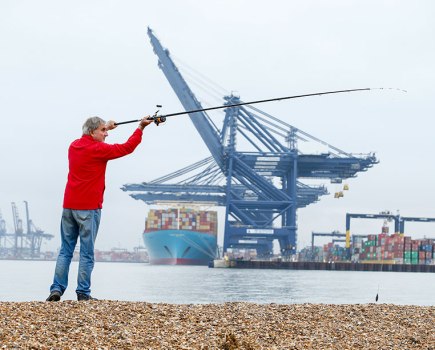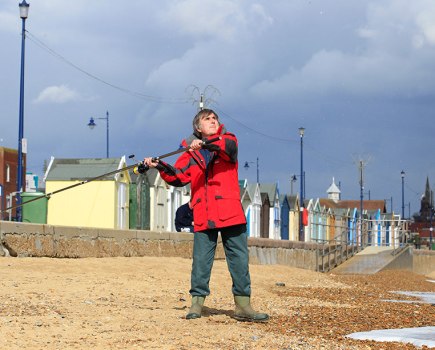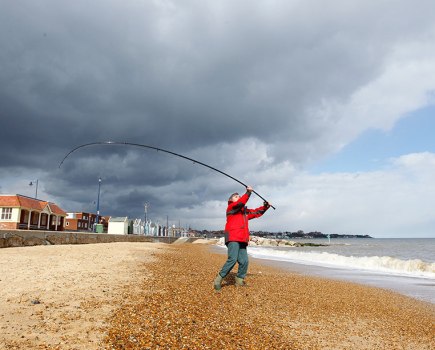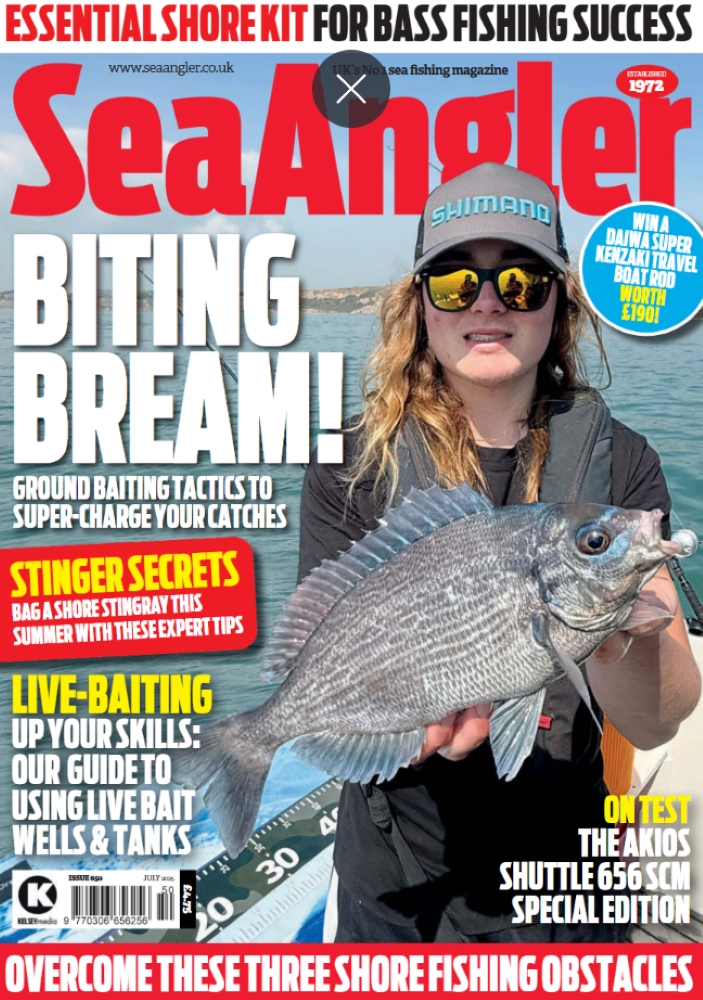Casting from the shore is one of those activities where, when things go badly wrong, your beach fishing session can soon turn into a real headache.
How often have you found yourself next to an angler on the beach only to watch him smoothly bend the rod and send a baited rig a long way out? When it is your turn it suddenly goes pear-shaped. Crack-offs, overruns, veering right or left or simply not far enough – it all adds to a bad day.
First, if you’re fishing a venue where long distance casting is vital for success and you can’t reach the fish, then you need to find a venue where you can.
Second, make sure that your rigs are easy to cast. Bait clips will help but you don’t always have to use them. Very long rigs and snoods can hamper casting.
Finally, before you cast ensure that your line isn’t wrapped around the tip. Get into the habit of reeling the rig to the tip ring and then dropping it slightly. If the line is wrapped around the blank, it won’t drop.
Ensure that you are comfortable. Being unstable or off-balance can be the main cause of problems. Most of all, don’t be put off by the guy who is casting long every chuck. These are the anglers who have many years of practice and experience behind them. If you put in the same hard work and effort, your day will come.
Using a casting instructor can iron out bad habits as well as helping boost your distance.
Why wind is a pain
Great advice for better casting technique
Casting into a head wind can be very frustrating for some anglers.
An onshore wind can create crunching waves on to the shingle and coupled with a hampered cast that drops your rig close to the shore, it is only a matter of time before your rig is washed back up the beach or buried in the shingle.
Ways to avoid this happening are first to reduce the number of hooks on a rig.
A two-hook or single clipped rig will cast better than a three-hook version. Keep baits small; large baits are more difficult to punch into the wind.
You can gain extra yards by keeping your cast low over the water. Sending a rig high into the wind will only see it slowed dramatically or even pushed back to you.
Finally, if the wind is so bad you won’t enjoy the session anyway it’s probably best to put the bait back in the fridge and wait until conditions are much more comfortable.
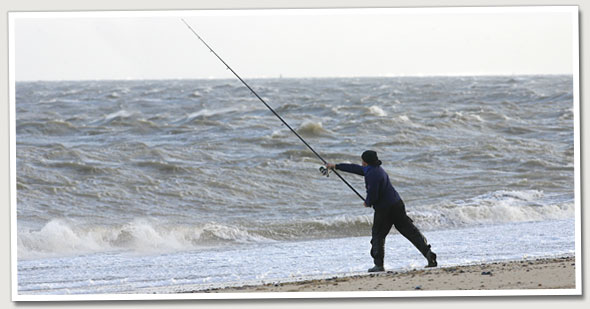
Combating a strong tide
Methods to stop your rig being washed ashore
Strong tides can be so difficult to fish that many anglers just pack up and leave.
After casting, some like to tighten the line into the spiked sinker and soon find that the fast-running tide pulls the rig from its hold. The rig ends up being dragged down tide, even with a fixed-grip lead.
One way to get more fishing time is to walk uptide, cast and then let out quite a large bow of line as you walk back. As the rig settles and anchors in front of you, don’t tighten the line because the bow will take the strain of the tide without dislodging the sinker. When a fish is hooked, the line should go slack as the sinker is pulled free. It may not be possible to use this tactic on a crowded beach, and casting short may then be the only solution.
How to get a grip
Time to bring out the rubber gloves
Q: When I cast with a multiplier reel the line slips under my thumb. How can I stop this?
A: Trying to grip the spool of a multiplier reel when casting with a wet thumb is difficult, but this is an easy problem to fix.
Many anglers like to use a small piece of bicycle inner tube fixed under the reel seat or coaster. Before casting fold it over the spool of the reel, and then use this to grip the spool with your thumb.
An easier solution is to use a simple pair of Marigold gloves, cut the fingers off and then cut 1in segments from them. Slide a segment over your thumb and leave it there while you fish. Each time you cast, this will aid in gripping the spool. If the ‘thumby’ tears, replace it with another segment that you have cut.
For more fishing advice and species information, head to our Tips & Tactics section or Subscribe to Sea Angler



